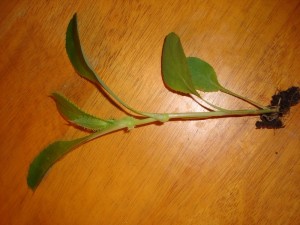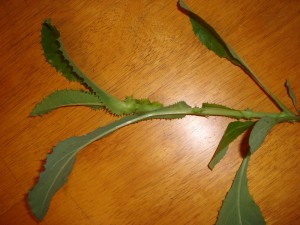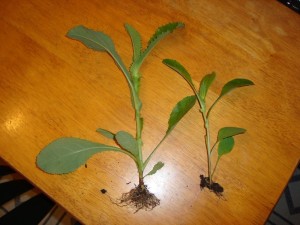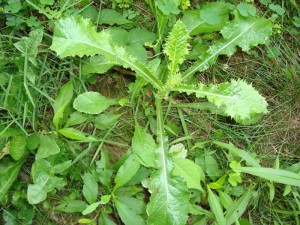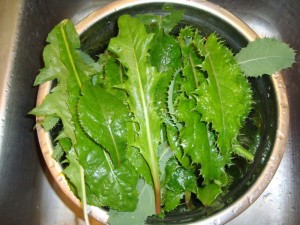The full profiles will be posted to, and updated, on the Wild Cookery Forum. I have planned to do these for at least the past year, but have never quite gotten around to it. So without further ado…
Janos’ Plant Profiles, Part I: Spiny Sow Thistle
Common Plant name: Spiny Sow Thistle
Hoity Toity (Dead Latin) Name: Sonchus asper
Classification: Choice Edible Plant
Identification: This plant, a member of the Asteracea Family, has spiny, serrated leaves that curl along and around the stem of the plant. When in bloom it has yellow flowers which look dandelion-like superficially. It’s quite spiny, and prickly to the touch, and you may mistake it for an actual thistle if you aren’t familiar with the two plants. But it’s spines are softer and nowhere near as rigid as a real thistle. The spines are also part of the leaves, and not separate from it and detachable such as with an actual thistle. You can eat the smaller leaves raw without any problems. The older ones however, may be prickly enough that they need to be trimmed or cooked before consumption.
Juvenile Plant Photos
Here are some little guys:
Flowering Plant Photos
(Pictures to be added when in season)
Plant in Seed Photos
(Pictures to be added when in season)
Uses: You nom it of course! The leaves, buds, flowers, new shoots, and upper part of stem are all edible. Young and tender here is much better than old, tough, and rank. Especially on latex exuding plants. The leaves can be eaten at any time equally well, though younger is typically more tender and less bitter. I like to get the flower buds before they open and use the top section of the plant as kind of a ‘sonchusparagus’ I’ve also cooked and eaten small roots before along with the greens, but can’t officially recommend that as I haven’t been able to find any reference material on it’s use.
Nutrition: Sonchus asper are quite rich in Fiber, Omega-3 Fatty Acids, Vitamin C, Calcium, Iron, Zinc, Copper, and Manganese. Equal to, or more so than most common domesticated vegetables.*
Preparation: Typically I’ll boil these, no matter what part it is, for 15 minutes or so, drain, and then use like any other foundational green. In fact one of the spring delicacies my family looks forward to every year is fresh spiny sow thistle greens mixed with wild garlic greens and mushrooms over rice. It’s a seasonal spring treat that everyone raves about.
Preparation Photos
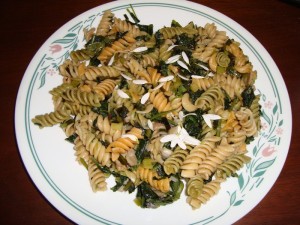
Wild Greens Noodle Medley – Two kinds of sonchus, dandelions, wild garlic, chicory, plantain, thistle, dock, and sprinkled with ox-eye daisy petals
Cautions:
There are some unreliable sources that classify this plant as a ‘Noxious Weed’. That’s fair enough, as I classify those sources as pretty darn noxious myself.
I’m sure it’s possible to get a rash from this plant. Maybe even a severe one if you’re that one in a million who has such an allergic reaction. But let’s interject some reality here. Will it likely happen to you? Probably not. You’ll probably be struck dead with a micrometeorite first, or hit by lightning. I collect these barehanded, and even eat them raw from time to time. Guess what? Nothing happens. If someone has issues, they are probably also allergic to other ‘milky’ latex exuding plants, such as dandelions and wild lettuce. I highly doubt most are allergic to this plant in particular.
But that doesn’t mean that one in a zillion people won’t be affected by something like this, so use caution.
There’s the token safety disclaimer. Use caution when picking if you are allergic to other latex exuding plants. Some people are allergic to peanuts too. For the rest of us, it’s a fantastic nutrient dense wild food.
The vast majority of all people will find this plant to be delicious and nutritious.
References:
* Dr. John Kallas, PhD, “Edible Wild Plants” – Pps 358 – 359.

